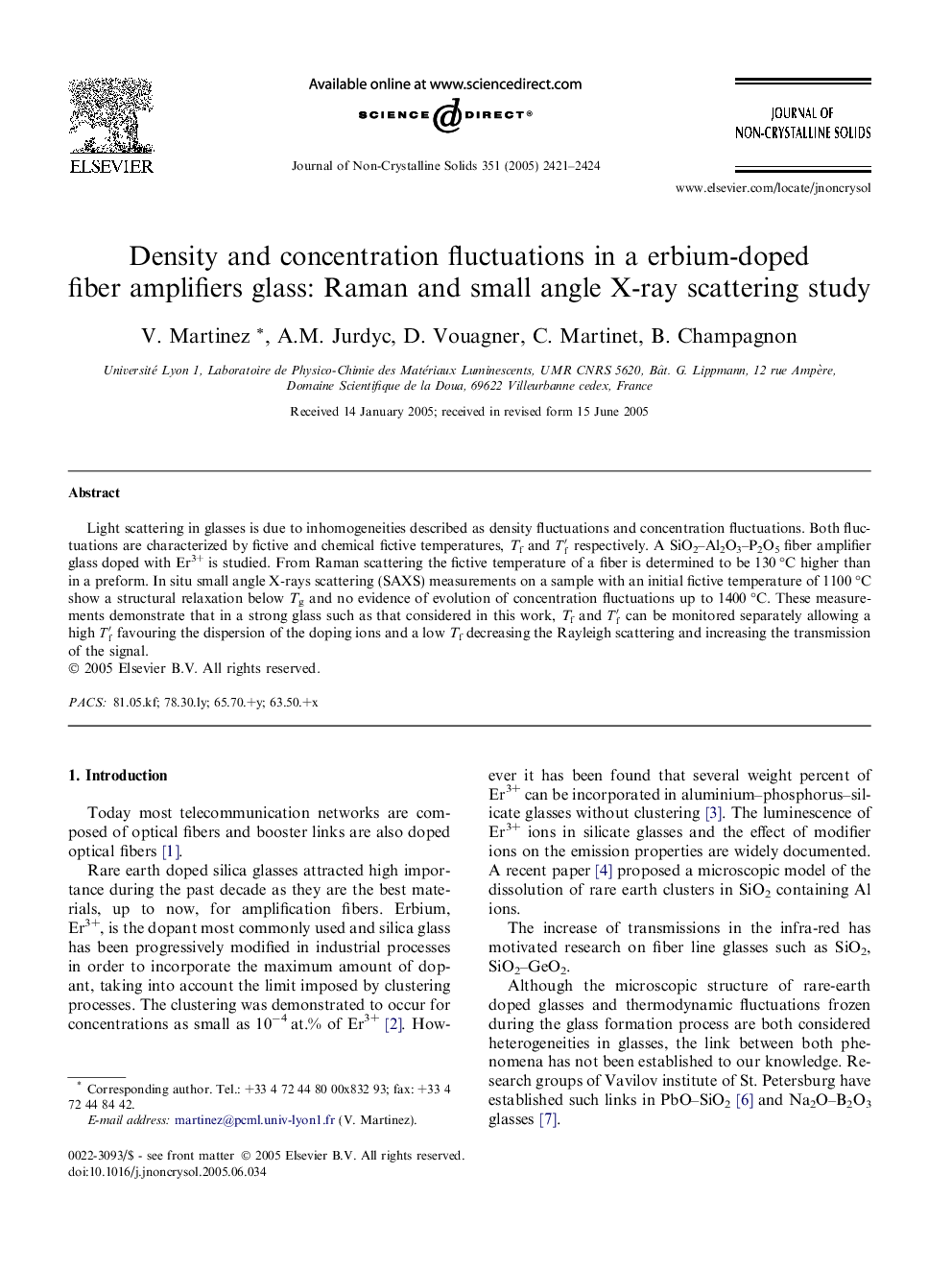| Article ID | Journal | Published Year | Pages | File Type |
|---|---|---|---|---|
| 1486717 | Journal of Non-Crystalline Solids | 2005 | 4 Pages |
Light scattering in glasses is due to inhomogeneities described as density fluctuations and concentration fluctuations. Both fluctuations are characterized by fictive and chemical fictive temperatures, Tf and Tf′ respectively. A SiO2–Al2O3–P2O5 fiber amplifier glass doped with Er3+ is studied. From Raman scattering the fictive temperature of a fiber is determined to be 130 °C higher than in a preform. In situ small angle X-rays scattering (SAXS) measurements on a sample with an initial fictive temperature of 1100 °C show a structural relaxation below Tg and no evidence of evolution of concentration fluctuations up to 1400 °C. These measurements demonstrate that in a strong glass such as that considered in this work, Tf and Tf′ can be monitored separately allowing a high Tf′ favouring the dispersion of the doping ions and a low Tf decreasing the Rayleigh scattering and increasing the transmission of the signal.
